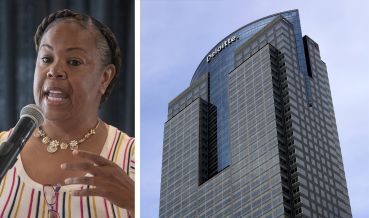Largest MSAs Saw Uptick in CRE Distress Last Month
By Marc McDevitt April 11, 2023 3:10 pm
reprints
The majority of the biggest metropolitan statistical areas (MSAs) tracked by CRED iQ saw increased distressed rates in outstanding commercial real estate debt in March.
Of the 50 largest MSAs tracked by CRED iQ, there were 28 markets that exhibited month-over-month decreases in the percentage of distressed CRE loans with an average individual market decline of 24 basis points compared to February. Of the 22 MSAs exhibiting month-over-month increases in distressed rates, the average increase by market was 60 basis points. Distressed rates include loans that are specially serviced, delinquent or a combination of both.
Notable markets with the largest improvements in the levels of distress last month included Birmingham, Ala. (minus 1.6 percent) and Pittsburgh (minus 1.2 percent). The San Francisco (plus 2.2 percent), Minneapolis (plus 2 percent) and Chicago (plus 1.9 percent) MSAs were among the markets that exhibited the sharpest percentage increases in distressed CRE loans during March.
The Minneapolis MSA, with the second-highest increase in CRE distress, notably ranked as the worst-performing MSA among tracked markets and has held that position since December 2022. Nearly 23 percent of CRE loans in CRED iQ’s database that are secured by properties in the Minneapolis MSA are delinquent or specially serviced.
The outlying distressed rate for Minneapolis was reinforced this month by an impending maturity default of a loan secured by a 57-story downtown office tower with a significant retail component. In late February, a $154.4 million mortgage secured by the IDS Center transferred to special servicing due to an anticipated maturity default ahead of the loan’s May maturity date. The IDS Center is a 1.4 million-square-foot mixed- use property in the Minneapolis Central Business District that consists primarily of office space with a sizable retail component. Occupancy of the property has averaged approximately 75 percent for the past three years.
For additional granular analysis of the top 50 markets, CRED iQ further delineated individual markets’ distressed rates by property type for a comprehensive view by market and sector. Three of the 10 highest increases in distress by market and sector across all property types and markets were in mixed-use, including Las Vegas (plus 40.3 percent), Minneapolis (plus 30.9 percent) and Detroit (plus 2.7 percent).
Las Vegas mixed-use was impacted by a $325 million mortgage secured by fee and leasehold interests in the Hughes Center, a 20-property, 1.5 million-square-foot office-retail campus located just off The Strip. The loan transferred to special servicing in March. Occupancy at the Hughes Center was roughly 71 percent as of year-end 2022.
Aside from the Minneapolis MSA, markets that had the highest overall rates of distress among the top 50 MSAs tracked by CRED iQ included Cleveland (10.2 percent), Birmingham (9.9 percent), Chicago (9.5 percent), and Milwaukee (8.9 percent). Compared to the prior month, Chicago displaced Charlotte in the list of top 5 markets with the highest CRE distress.
The Salt Lake City market (0.2 percent) had the lowest percentage of distress among the top 50 MSAs for the second consecutive month.
Marc McDevitt is a senior managing director at data analytics firm CRED iQ.


